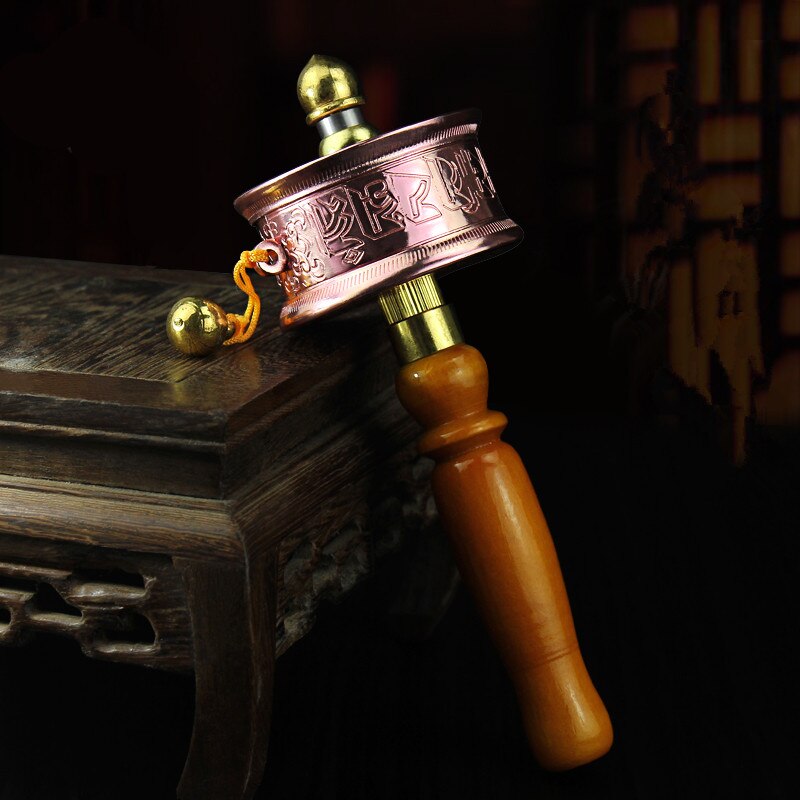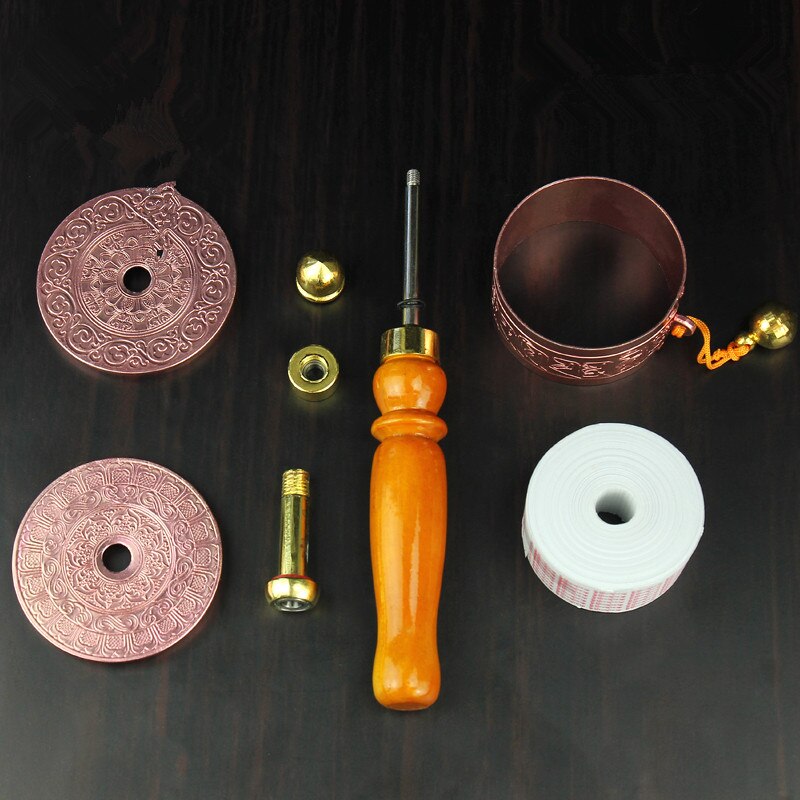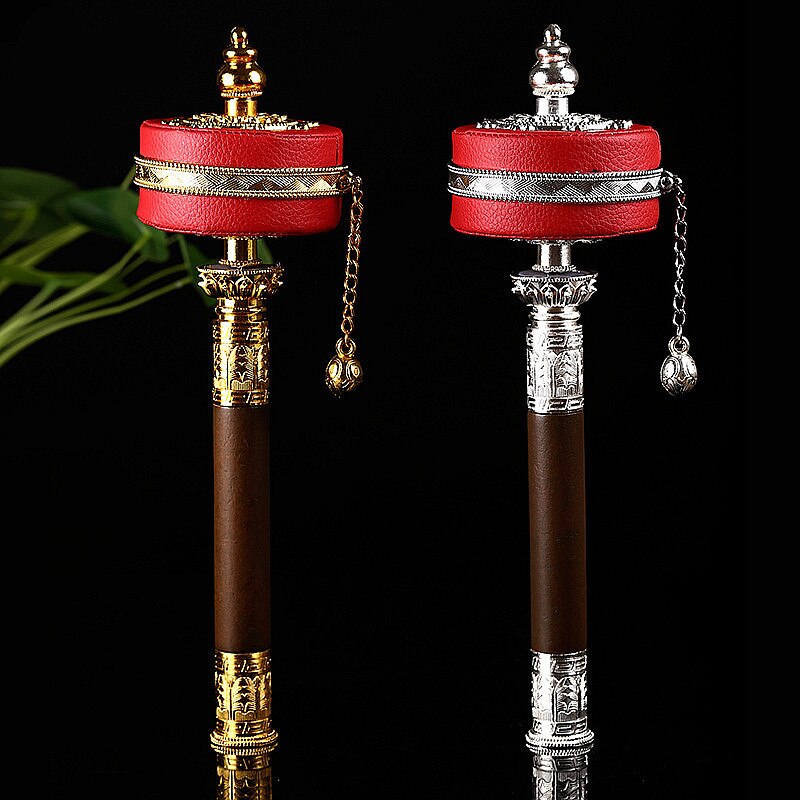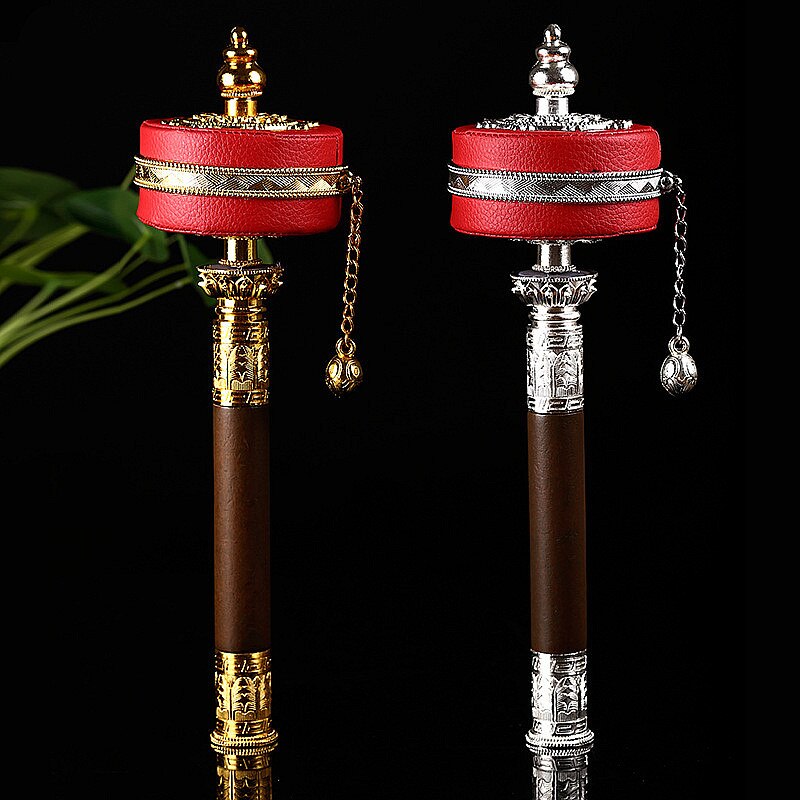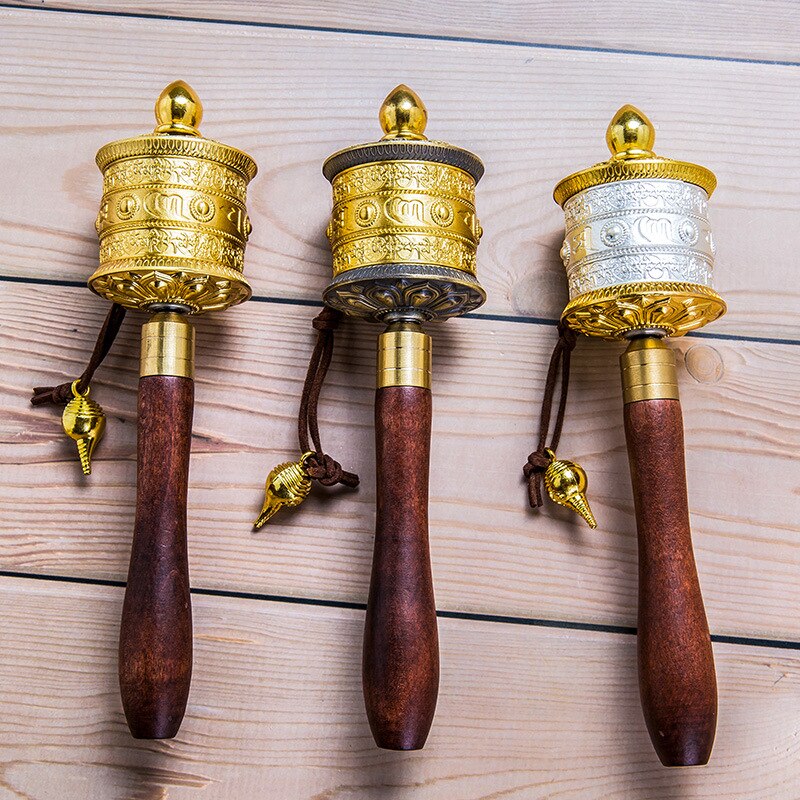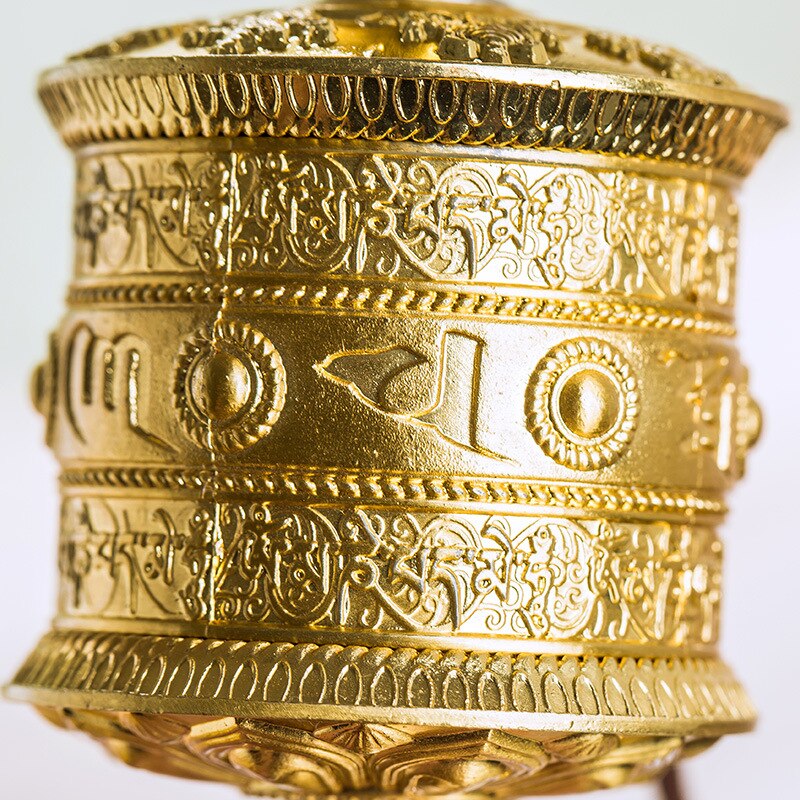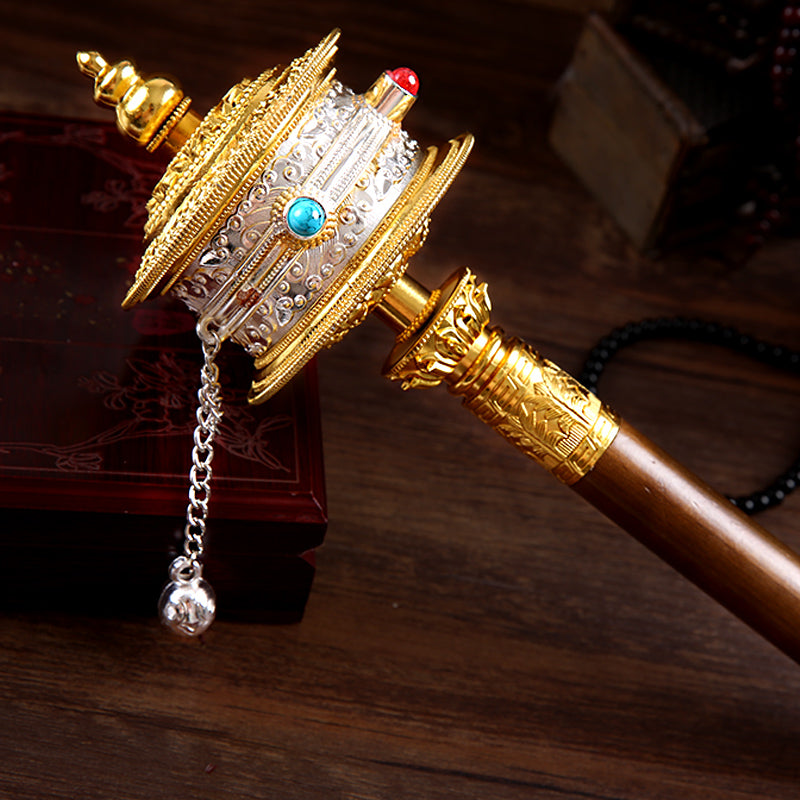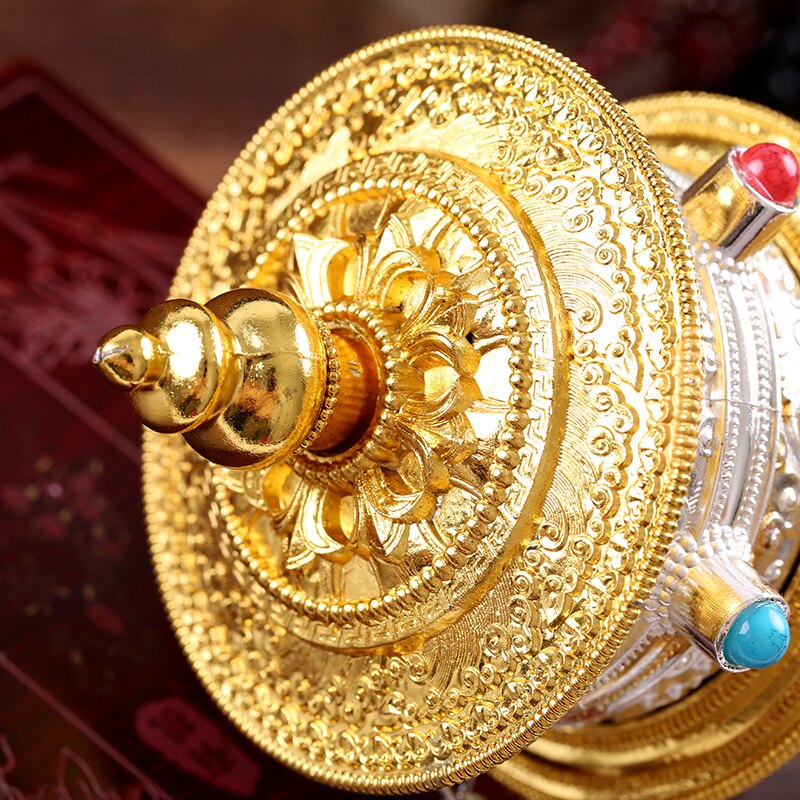Your Cart is Empty
🙏 La livraison est offerte sur tous vos achats ! 🙏
🙏 La livraison est offerte sur tous vos achats ! 🙏
🙏 La livraison est offerte sur tous vos achats ! 🙏
Notre site est chiffré de bout en bout par un protocole SSL et les paiements sont sécurisés via Stripe
Nous offrons la livraison sur tous nos produits partout dans le monde. (Hors DOM-TOM)
Vos commandes sont validées & préparées dans les 24 à 48 heures qui suivent vos achats.
 Livraison Offerte
Livraison Offerte
€119,99 €125,99 You Save 4% (€6,00)
Collections: Prayer wheel
Tibetan prayer wheels are used by multiple Tibetans every day on top of the world, sometimes for hours. The monks turn the prayer wheels to agglomerate blessings, to protect all living beings and to purify their karma.
According to the Grand Master Dalai Lama, "For the benefit of living beings, Buddhas and Bodhisattvas show themselves inside a Buddhist prayer wheel Tibetan ceremony to purify all of our harmful chakras and our blackening, and to inspire us to adapt the accomplishments of the road to enlightenment. ”
Rotating a Tibetan Buddhist ceremony prayer wheel with a large number of mantras inside equals countless numbers of mantras, but it is done in a flash. The addition of profits is also obtained by using prayer wheels stimulated by wind and water. Thus the wind or water which touches with the prayer wheel will be consecrated by the prayer wheel and will therefore be able to purify everything it touches from the negative chakra.
We constantly see practitioners making their journey with prayer wheels in hand, or as part of their pilgrimage, they spin a Buddhist prayer wheel Tibetan ceremony in the monasteries and Buddhist centers they visit.
/ p>
With each movement of the Buddhist prayer wheel Tibetan ceremony, the Buddha whose mantra is imprinted on it flows from the wheel in entities as abundant as mantras. In this way, if there are one thousand Manjushri mantras contained in the Buddhist prayer wheel Tibetan ceremony, then one million Manjushri manifestation will occur at each turn of the Buddhist prayer wheel Tibetan ceremony and benefit Buddhists around the world. .
However, we know that the profits of spinning the wheel of the Tibetan Buddhist prayer wheel with a determined mind are a hundred times greater than spinning it with a scattered mind.
A Buddhist prayer wheel Tibetan ceremony is an example of Buddhist processes. This tool allowed monks to increase the number of prayers they expressed by hundreds.
Indeed, the Buddhist prayer wheel Tibetan ceremony is filled with replicas of precepts such as that of Avalokiteshvara the mantra om mani padme hum. The mantra is written down on silk sheets as many times as possible, sometimes countless times. The sheet is rolled up around a pivot and covered with a safety cylinder.
Nowadays, the microfilm technique has made it possible to recite millions, if not hundreds of billions of prayers in a single turn of the wheel
Prayer wheels vary in size from a small hand-held wheel to a large wheel bolted into the enclosure of a temple, like a removable pylon.
They are imagined to be set in motion by hand, by a gust, water or fire. When they are part of a building, the monks turn around the monument clockwise and spin the wheels as they scroll. Because of this, they have the advantage of avoiding the holy temple and receiving the blessings communicated using the Buddhist prayer wheel Tibetan ceremony.
Prayer wheels are made in a few calibers: they can be small and hung from a scepter or a pole, and turned manually; of intermediate size and attached in buildings or temples, or very large and perpetually turned by a water mill. However the small Buddhist Tibetan ceremony hand-held prayer wheel are by far the most visible.
The simple act of touching and turning a Tibetan Buddhist prayer wheel grants extraordinary purification and amasses incredible dedication. We imagine that the more precepts one recites, the more benefit one gains, which increases the possibilities of receiving a higher reincarnation and finally catching nirvana.
Touching or spinning the Buddhist prayer wheel Tibetan ceremony is described as so effective that one compares this act to that of a hundred worshipers praying a lifetime.
One of the benefits of the Tibetan Buddhist prayer wheel ceremony is that it materializes all the actions of the Buddhas and Bodhisattvas of the 10 directions. For the benefit of humans, Buddhas and Bodhisattvas show themselves in the prayer wheel to purify all of our negative karma and blindnesses, and to cause us to actualize the completions of the path to enlightenment.
Reciting mantras using the Buddhist prayer wheel Tibetan ceremony is found to attribute whatever a practitioner's desire.
It is strongly believed that turning the Tibetan Buddhist Prayer Wheel ceremony with reproach and abjection will facilitate you to eliminate the four evil deeds, the five actions of immediate retribution, the eight evil views not to mention the ten non-virtues.
Anyone who runs the Buddhist Tibetan ceremony prayer wheel in their lifetime should never reincarnate with abnormalities during their lifetime, nor with manifestations such as blindness, deafness, dumbness or infirmity.
/ p>
Prayer wheel: Mani wheel (a hand-held prayer wheel)
Prayer wheel: Water wheels (turned by flowing water)
Prayer wheel: Fire wheel (turned by the heat of a candle or an electric light)
Prayer wheel: Wind wheel (a kind of prayer wheel turns thanks to the wind)
Prayer wheel: Fixed prayer wheels
Prayer wheel: Electric Dharma Wheels (powered by electric motors)
Rotating this Tibetan ceremony Buddhist prayer wheel and uttering is considered one of the most thoughtful and beneficent moves. Commonly built around the circumference of stupas and buildings, large numbers of Buddhist prayer wheels can be counted in the hundreds for practitioners to spin as they pass by or around buildings or stupas in the city. clockwise.
A known example of many prayer wheels in one place may be the famous Swayambhunath stupa, where many prayer wheels are set up around the enormous Swayambhunath stupa. Buddhist prayers is: "OM MANI PADME HUM" or "OM MANI PEME HUNG".




